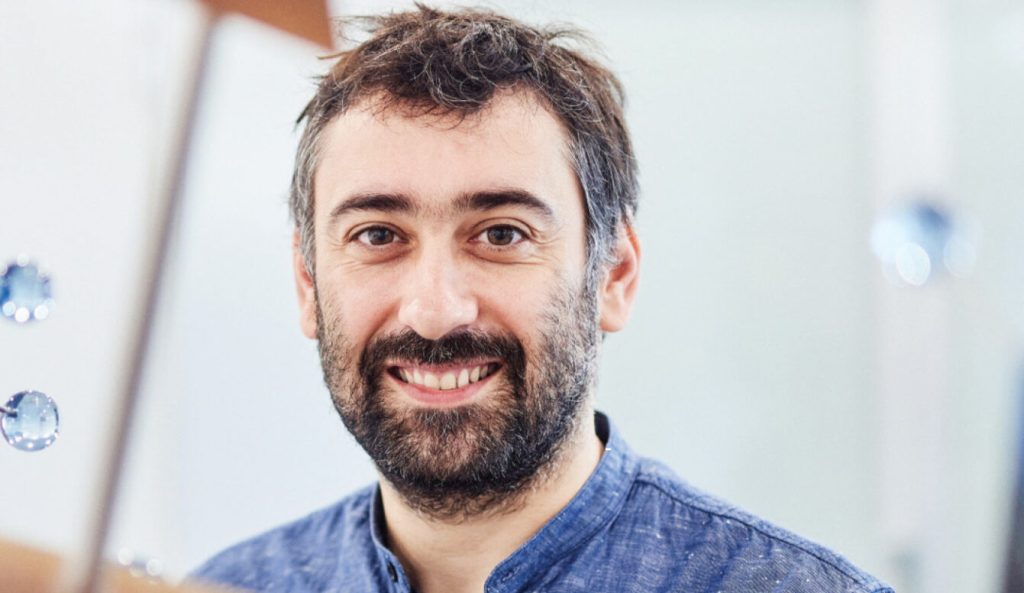Josep Cornella breaks boundaries to make new and better catalysts

Josep Cornella doesn’t deal in absolutes. While chemists typically draw rigid lines between organic and inorganic chemistry, Cornella, a researcher at Max-Planck-Institut für Kohlenforschung in Mülheim an der Ruhr, Germany, believes in just the opposite.
“You have to be open to cross boundaries,” he says, “and learn from it.” The fringes are “where the rich new things are.”
Cornella is an organic chemist by industry standards; he synthesizes molecules that contain carbon. But he’s put together a team from a wide range of backgrounds: inorganic chemists, physical organic chemists, computational chemists. Together, the team brainstorms novel approaches to designing new catalysts, so that chemical reactions essential to pharmaceuticals and agriculture can be made more efficient and friendly for the environment. Along the way, Cornella has unlocked mysteries that stumped chemists for years.
“He has told us about catalysts … that we didn’t have before, and which were just pipe dreams,” says Hosea Nelson, a chemist at Caltech who has not worked with Cornella.
Bold idea
When Cornella heard a speaker at a 2014 conference say that bismuth was nontoxic, he was sure it was a mistake. Bismuth is a heavy metal that sits between toxic lead and polonium on the periodic table. But it is indeed relatively nontoxic — it’s even used in the over-the-counter nausea medicine Pepto-Bismol.
Still, bismuth remains poorly understood. That’s one reason it attracted him. “It was a rather forgotten element of the periodic table,” Cornella says. But, “it’s there for a reason.”
Cornella started wondering if an element like bismuth could be trained for use as a catalyst. For the last century, scientists have been using transition metals, like palladium and iron, as the main catalysts in industrial synthesis. “Could we actually train [bismuth] to do what these guys do so well?” he asked. It was a conceptual question that “was completely naïve, or maybe stupid.”
Far from stupid: His team successfully used bismuth as a catalyst to make a carbon-fluorine bond. And bismuth didn’t just mimic a transition metal’s role — it worked better. Only a small amount of bismuth was required, much less than the amount of transition metal needed to complete the same task.
“A lot of people, including myself and other [researchers] around the world, have spent a lot of time thinking about how to make bismuth reactions catalytic,” Nelson says. “He’s the guy who cracked that nut.”
Standout research
While the bismuth research is “weird” and “exciting,” Cornella says, it remains a proof of concept. Bismuth, though cheap, is not as abundant as he had hoped, so it’s not a very sustainable option for industry.
But other Cornella team findings are already being used in the real world. In 2019, the group figured out how to make an alternative to Ni(COD)2, a finicky catalyst commonly used by chemists in the lab. If it’s not kept at freezing temperatures and protected from oxygen by a layer of inert gases, the nickel complex falls apart.
The alternative complex, developed by Lukas Nattmann, a Ph.D. student in Cornella’s lab at the time, stays stable in oxygen at room temperature. It’s a game changer: It saves energy and materials, and it’s universal. “You can basically take all those reactions that were developed for 60 years of Ni(COD)2 and basically replace all of them with our catalyst, and it works just fine,” Cornella says.
Cornella’s lab is also developing new reagents, substances that transform one material into another. The researchers are looking to transform atoms in functional groups — specific groupings of atoms that behave in specific ways regardless of the molecules they are found in — into other atoms in a single step. Doing these reactions in one step could cut preparation time from two weeks to a day, which would be very useful in the pharmaceutical industry
Taking risks
It’s the success that gets attention, but failure is “our daily basis,” Cornella says. “It’s a lot of failure.” As a student, when he couldn’t get a reaction to work, he’d set up a simple reaction called a TBS protection — the kind of reaction that’s impossible to get wrong — to remind himself that he wasn’t “completely useless.”
Today he runs a lab that champions taking risks. He encourages students to learn from one another about areas they know nothing about. For instance, a pure organic chemist could come into Cornella’s lab and leave with a good understanding of organometallic chemistry after spending long days working alongside a colleague who is an expert in that area.
To Cornella, this sharing of knowledge is crucial. “If you tackle a problem from just one unique perspective,” he says, “maybe you’re missing some stuff.”
While Cornella might not like absolutes, Phil Baran, who advised Cornella during his postdoctoral work at Scripps Research in San Diego, sees Cornella as fitting into one of two distinct categories: “There are chemists who do chemistry in order to eat, like it’s a job. And there are chemists who eat in order to do chemistry,” Baran says. Cornella fits into the latter group. “It’s his oxygen.”